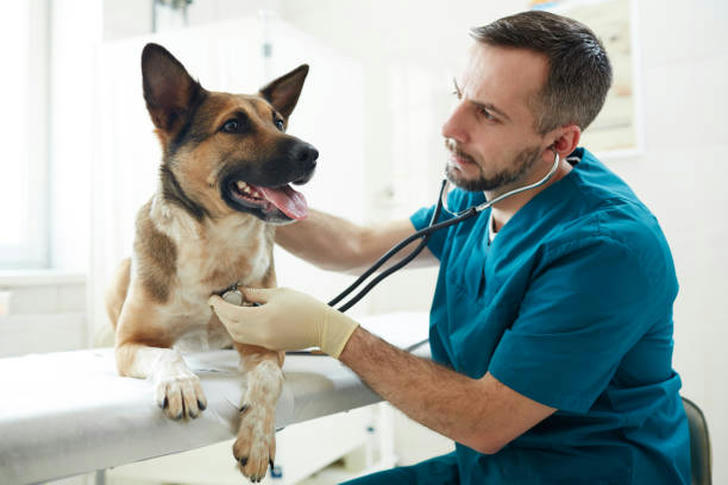When to See a Vet: Warning Signs That Your Pet Needs Immediate Medical Attention
Unlike humans, pets can't tell us when they're feeling unwell, so it's up to us to recognize the signs that something might be wrong. While some health issues can be managed with regular care, others require immediate medical attention. Ignoring warning signs could put your pet's health—and even their life—at risk.

A Cautionary Tale
Bella, a playful beagle, had always been full of energy, so when she became sluggish, her owner, Tom, thought it was just age catching up. She ate less, her coat lost its shine, and her breathing became labored, but Tom dismissed these signs, thinking they were nothing serious.
Days passed, and Bella's condition worsened until one morning she collapsed. Tom rushed her to the vet, only to learn she had been suffering from kidney failure for weeks. Those subtle signs had been warnings.
The vet tried their best, but unfortunately, it was too late, and Bella died that day. Sadly, the vet explained to Tom that Bella's condition could have been managed if it had been caught earlier.
Bella's passing reminded Tom—and all pet owners—that pets often hide their pain, so it's crucial to take even subtle changes seriously.

Warning Signs That Require Immediate Veterinary Attention
Here are common warning signs that indicate your pet should see a veterinarian immediately:
1.Difficulty Breathing: Any signs of labored breathing, wheezing, or persistent coughing.
2.Excessive Vomiting or Diarrhea: Frequent vomiting or diarrhea, especially if it's severe or contains blood.
3.Severe Lethargy: A significant decrease in energy or unusual lethargy that lasts for more than a day.
4.Uncontrolled Bleeding: Any bleeding that doesn't stop within a few minutes, whether from a wound, nosebleed, or other sources.
5.Seizures: Any seizure activity, including convulsions or sudden loss of consciousness.
6.Abdominal Distension or Pain: A swollen or painful abdomen, which may indicate serious conditions like bloat or internal bleeding.
7.Loss of Appetite or Thirst: Refusal to eat or drink for more than 24 hours, especially if accompanied by other symptoms.
8.Change in Behavior: Sudden aggression, withdrawal, or other significant changes in behavior that are out of character.
9.Pale or Blue Gums: Gums that appear pale, blue, or yellow can indicate serious health issues.
10.Difficulty Walking or Weakness: Trouble standing, walking, or signs of pain when moving.
11.Eye or Nose Discharge: Unusual discharge from the eyes or nose that is persistent or severe.
12.Exposure to Toxic Substances: If a pet has ingested a toxic substance (like chocolate, certain plants, or chemicals), seek immediate veterinary care.
If you notice any of these warning signs in your pet, it's essential to contact a veterinarian right away for guidance and potential treatment. Early intervention can make a significant difference in outcomes for your beloved companion!

How To Choose The Right Veterinarian
Choosing the right veterinarian is also crucial in caring for your pet, here are some key steps that will help you:
1. Consider Your Pet’s Specific Needs
Species and Breed: Some vets specialize in certain species (e.g., cats, dogs, exotic pets) or breeds that may have specific health concerns.
Medical History: If your pet has a chronic condition or requires special care, look for veterinarians with experience in those areas.
2. Research Potential Veterinarians
Ask for Recommendations: Seek recommendations from friends, family, or local pet owners. Online reviews can also provide insight into a vet's reputation.
Check Credentials: Verify the veterinarian's education, licensing, and any additional certifications, such as specialties in surgery, dentistry, or behavior.
3. Visit the Clinic
Observe the Environment: Take note of the cleanliness, organization, and overall atmosphere of the clinic.
Meet the Staff: Friendly and knowledgeable staff can make a big difference in your experience. Ask questions to gauge their expertise and approach to animal care.
4. Assess Services Offered
Comprehensive Care: Ensure the clinic offers a full range of services, including preventive care, diagnostics, surgery, and emergency care.
Specialized Services: If your pet requires specific treatments (e.g., acupuncture, behavioral counseling), check if these services are available.
5. Evaluate Communication Style
Approachability: Your veterinarian should be willing to listen to your concerns and answer your questions clearly.
Client Education: Look for a vet who emphasizes educating pet owners about their pet's health and preventive care.
6. Consider Location and Hours
Convenience: Choose a clinic that is easily accessible, especially in case of emergencies.
Availability: Check the clinic’s hours and whether they offer emergency services or after-hours care.
7. Review Costs and Payment Options
Cost Transparency: Inquire about examination fees, vaccination costs, and other typical charges.
Payment Plans: Ask if the clinic offers payment plans or works with pet insurance providers to make care more affordable.
8. Trust Your Instincts
Personal Comfort: You and your pet should feel comfortable with the veterinarian and the clinic. Trust your gut feeling about the relationship.
Ongoing Evaluation: After your first visit, assess how well your expectations were met and whether you feel confident in the care provided.

Conclusion
Recognizing when your pet needs to see a veterinarian is crucial for their health and well-being. As illustrated by Bella's story, subtle changes in behavior or physical condition can signal serious issues that require immediate attention.
By being aware of the warning signs and acting quickly, you can help ensure your furry friend receives the care they need.
Always remember, your pet relies on you to notice when something is wrong. By staying vigilant and proactive, you can help your beloved companion live a happy and healthy life.
